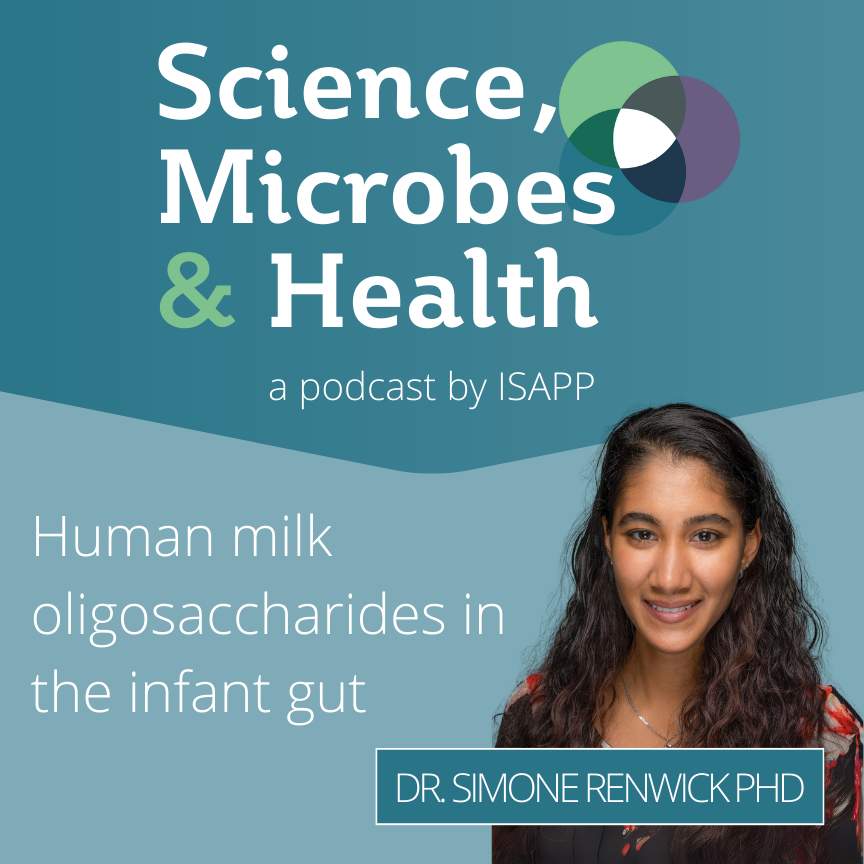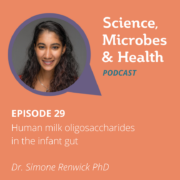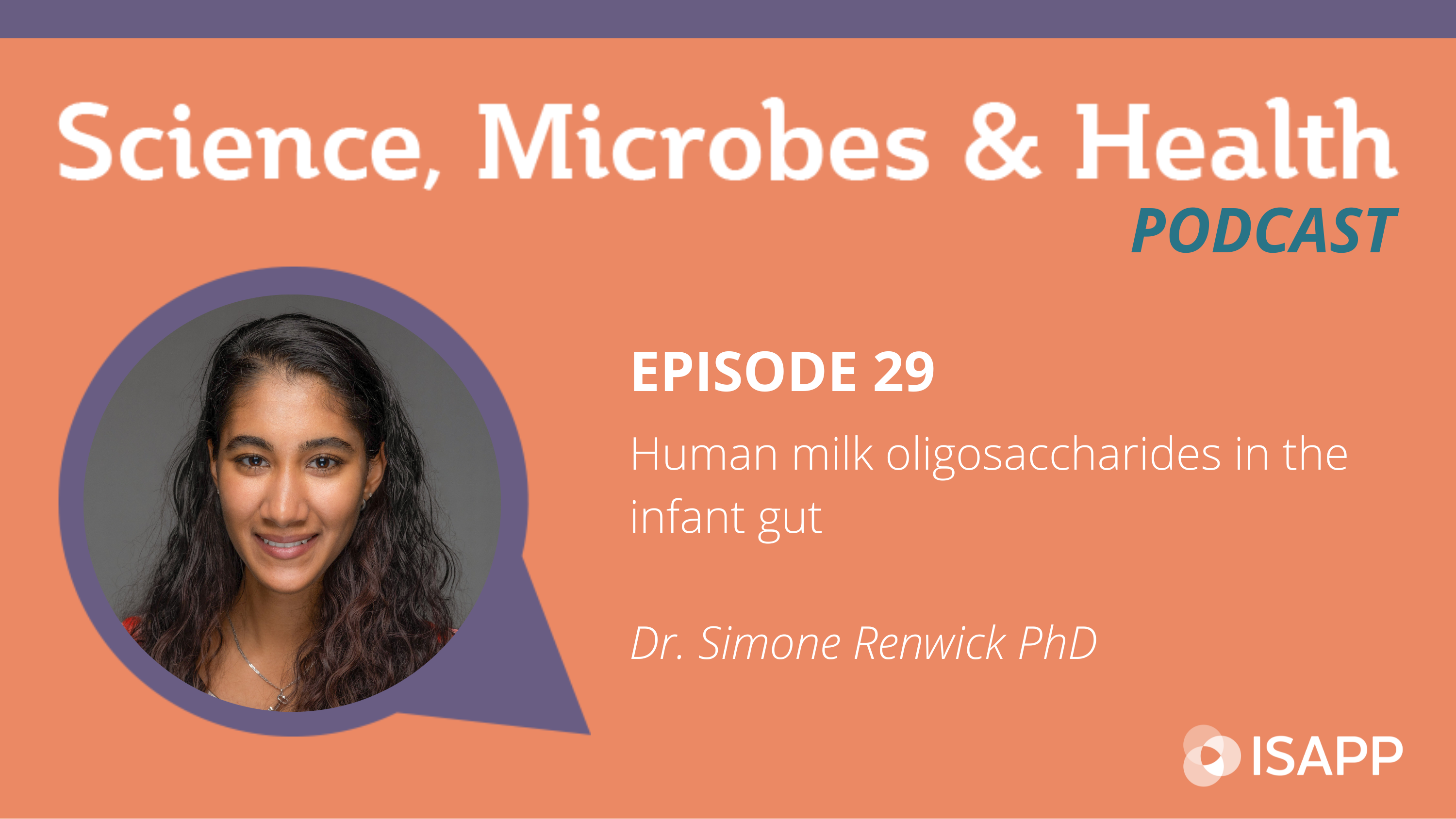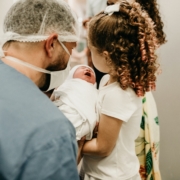Archive Highlight: Human milk oligosaccharides in the infant gut, with Dr. Simone Renwick PhD
Podcast: Play in new window | Download
Subscribe: Apple Podcasts | Spotify | RSS
In this episode, the ISAPP hosts discuss human milk and the infant gut with Dr. Simone Renwick PhD from Mother-Milk-Infant Center of Research Excellence (MOMI CORE) at UC San Diego, USA. Dr. Renwick talks about her work investigating how communities of microbes versus individual microbes in the infant gut metabolize human milk oligosaccharide (HMO) structures, and what we know about the origin and functions of the microbes contained in human milk.
Key topics from this episode:
- Dr. Renwick studies how components of human milk foster the development of the infant gut microbiota. These components include HMOs (special sugars found in human milk) and the milk microbiota.
- HMOs cannot be metabolized by the human body, but when microbes in the infant gut break them down, it has health benefits for the infant (because infants who receive no human milk are predisposed to a range of diseases).
- Dr. Renwick used in vitro models to mimic infant microbiota communities, and found that these communities rapidly degraded the HMOs. This metabolism increased microbes associated with health and suppressed potentially pathogenic microbes.
- Although most research on HMOs focuses on bifidobacteria that are specially equipped to break them down, she looked at individual strains within the infant gut community and found approximately 100 species capable of directly degrading HMOs.
- Once breastfeeding ceases, some microbes in the infant gut adapt to different sources of sugars, but others greatly decrease in abundance.
- Microbes act differently in a community than on their own. Within a complex community, microbes that are better equipped to degrade the HMOs will act quickly, producing byproducts that are then are available to other members.
- All of the different in vitro models have their advantages and disadvantages. The spatial relationships of the human body are often missing in in vitro models.
- Humans appear to have the highest concentration of milk oligosaccharides of any mammal.
- The milk microbiota is another active area of investigation. Live microbes are present in the mammary gland, but their source is still unknown. They tend to resemble the composition of the microbiota on the skin as well as the infant oral cavity, but curiously, anaerobic bacteria are also found in the milk microbiota. Somehow these microbes may move from the mother’s gut to the milk. These microbes may not directly metabolize HMOs. (See this paper.)
- Formula companies are beginning to put HMO structures into their products – mainly 2′-Fucosyllactose.
Episode links:
- Human milk oligosaccharides — Prebiotics in a class of their own? ISAPP webinar.
- The many functions of human milk oligosaccharides: A Q&A with Prof. Ardythe Morrow. ISAPP blog.
- Bifidobacteria in the infant gut use human milk oligosaccharides: how does this lead to health benefits? ISAPP blog.
About Dr. Simone Renwick PhD:
Dr. Simone Renwick is the Milk & Microbes postdoctoral fellow at the Mother-Milk-Infant Center of Research Excellence (MOMI CORE) at the University of California, San Diego, USA. Her research focuses on understanding the role of human milk components, such as the human milk oligosaccharides (HMOs) and milk microbiota, in fostering the developing infant gut microbiota. She is also interested in the potential therapeutic applications of milk components in diseases that affect adults. Currently, Simone is supervised by Drs. Lars Bode, Rob Knight, Pieter Dorrestein, and Jack Gilbert. Prior to her postdoc, Simone completed her PhD in Molecular and Cellular Biology (MCB) at the University of Guelph, Canada, under the supervision of Dr. Emma Allen-Vercoe.
She was the recipient of the Students and Fellows Association poster prize at the ISAPP 2023 meeting in Sitges, Spain.
Sign up for our monthly newsletter
Follow us on LinkedIn, Bluesky, X, Facebook,









